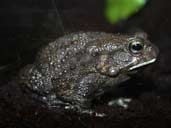 |
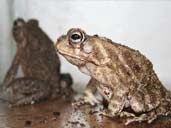 |
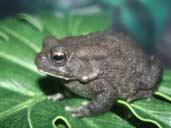 |
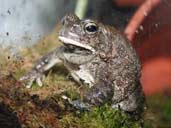 |
Square Marked Toad (Bufo Regularis) Care Sheet
Common names: Square Marked Toad, Egyptian Toad, African Toad or Reuss’s Toad
Scientific Name: Bufo Regularis
Description
Size: Males 6-9cm – Females 7-13cm
Life span: (Captive) Pet Square marked toads can live 10 years plus with the right care.
Origin: Square marked toads are native to Africa. They are an extremely wide ranging toad found in many countries including: Egypt, Gambia, Kenya, Mali, Nigeria, Sierra Leone, Tanzania and many others.
Habitat: The Square Marked Toad has colonised a broad range of habitats including moist savannah, tropical and subtropical forests and grassland, dry forests, the edges of rainforests (but never within true rain forest regions), human settlements, swamp land and even high altitude grassland, this species must be regarded as highly adaptable.
Things to consider when purchasing your first Amphibian
• Who will look after your new pet if you are away?
• Can you get food easily from your local pet shop?
• Can you deal with feeding live insects as food?
• Can you handle the live food to feed your pet?
• Is the rest of the family happy to live with an amphibian?
Captive Care
Temperament: Square marked toads are highly inquisitive and lively toads, and can often be seen exploring their tank. They make an ideal first amphibian as they are relatively easy to care for.
Housing

Square Marked toads are quite large and will require a larger terrarium than most ground dwelling amphibians. A 15-20 Gallon tank should be adequate for 2 adult toads. They are quite social and can be housed with other square marked toads.
Square marked toads do well in a savannah/woodland set-up
Your terrarium should contain:
Substrate
A coco husk substrate, sandy top soil or compost (without fertilisers), orchid bark chips, sphagnum moss, live moss and a selection of live plants (see plant list in the forum) can all be used in your set-up. Set-up tips can also be found on the forum.
A place for your toad to hide and climb
All amphibians require somewhere to hide and may become stressed if this is not provided. This could be a plant pot on its side, which is low cost but easily cleaned if it becomes soiled.
Logs and cork bark make good natural looking additions to your terrarium and make great hiding places. Plants and stones can also be used.
Stones or branches from the wild need to be debugged by soaking first in chlorine/water solution, then rinsed thoroughly, soaked in clean water, then left to dry in the sun. Some live plants may be harmful to your toad, if in doubt please see the list of safe plants which can be used in the forum.
A change of scenery
Square marked toads are very inquisitive animals and like to explore new surroundings. Once in a while change the layout of the terrarium; this will keep your toad from becoming bored. You will notice once you put your toad(s) back in the tank it will start to re-explore its new surroundings.
Water
All amphibians need fresh water daily. A large water bowl should be given (no deeper than the toads height when at rest) with de-chlorinated or bottled spring water. The water should be changed daily to avoid the build up of bacteria.
Toads like most amphibians will soak up water through their skin and since their water bowl is used as the main place to defecate it is important that it is cleaned regularly.
Humidity
Misting the tank regularly with de-chlorinated or bottled spring water will ensure that the substrate does not dry out. Placing the water bowl in the warmer side of the terrarium will also raise humidity levels.
Heat
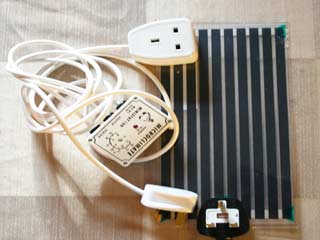 The ideal temperature for your toads is a temperature gradient of 21-26°C with a slight temperature drop at night or 2 or 3 degrees.
The ideal temperature for your toads is a temperature gradient of 21-26°C with a slight temperature drop at night or 2 or 3 degrees.
Heat should be provided using a under tank heat mat with thermostat. Heat mats should only cover between a third and a half of the floor space to allow your toad to thermo regulate. A cool hide should be placed in one end of the tank and a hotter hide at the warmer end, giving your toads a place to hide at both ends.
Never use heat lamps or basking lamps for amphibians, as these can cause your toads to dehydrate.
It's useful to have a small thermometer on either end of the terrarium to check the temperature. One end should be around 26°C and the other around 21°C. Your toads can thermo-regulate by moving around the tank.
Feeding Your Square Marked Toads
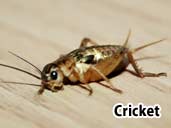 |
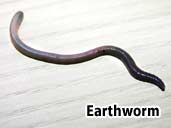 |
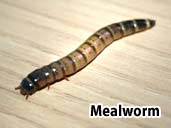 |
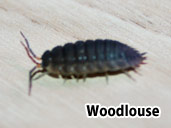 |
Toads should be fed daily with a varied diet of appropriately sized gut loaded insects, including meal worms, crickets, small grass hoppers, flour beetles, wax-worms, moths, caterpillars, earthworms and woodlice. Feeding 3 or 4 insects per toad per feeding. The live food should be dusted with calcium supplements once a week.
Square marked toads will actively hunt their food, instead of waiting for it to come to them like other frogs and toads. This makes them enjoyable to watch at feeding time.
Shedding
Square marked toads shed their skin at regular intervals as they grow. The old skin is pushed off with the hind legs and the skin peels off from the back end. The skin should come off in one piece and is normally eaten by the toad. The skin is pushed forwards using it’s legs towards the mouth.
Sexing
Square marked toad males can be heard calling, making this the most reliable way of sexing. Females are more rounded than males and are usually much larger.
Lighting
Square marked toads do not need the edition of UV lighting if they have enough vitamins and variation in their diet. Although you may find the live plants in your terrarium will die without any light. A fluorescent UVB tube is ideal as it won’t give out any heat and will help the plants thrive. You should place the light at one side of the terrarium creating a light gradient so your toads can find a darker place out of the light if preferred. Ideally you should cycle the lighting to mimic the toads natural habitat by having a 12/12 system - 12 hours of light and 12 of dark.
Cleaning
Your square marked toad’s terrarium should be inspected and spot cleaned daily when changing the water. Every two to three weeks clean out the tank completely and sterilise using a reptile/amphibian friendly disinfectant. Sterilise any décor and carefully remove any live plants to replace when the tank has been cleaned. Your toads should be moved to a temporary tank whilst being cleaned.
Handling Your Square Marked Toads
All amphibians are delicate skinned and oils and salts on our skin can cause them harm. Square marked toads have mild toxins on their skin that can cause itchiness and rashes. It is recommended to wear gloves if the need to handle arises. When cleaning you can safely remove your toads to another tank using an aquarium net usually used for pet fish.
Other questions about the square marked toad
This care sheet is a simple step-by-step guide to successful Square Marked Toad keeping, but if you have any more questions or need more specific information about the keeping of square Marked Toads, please visit our forum. It is a useful resource where you can ask members to share good practice and also talk about your experiences of being a Square Marked Toads.

